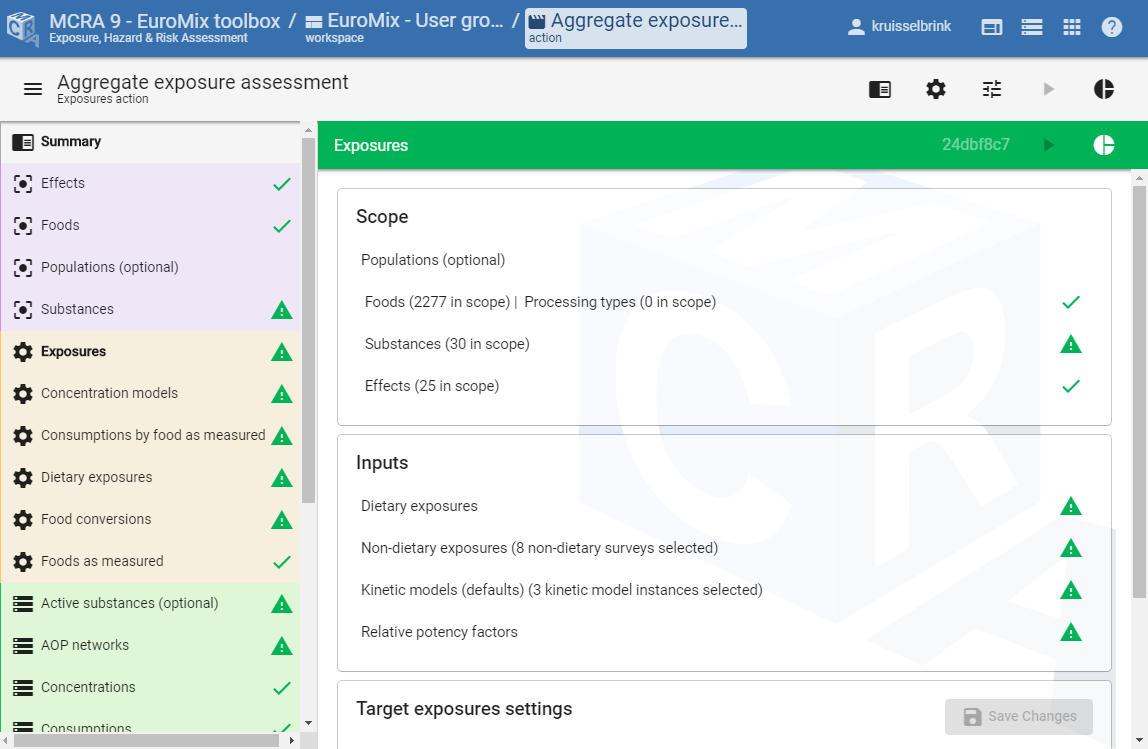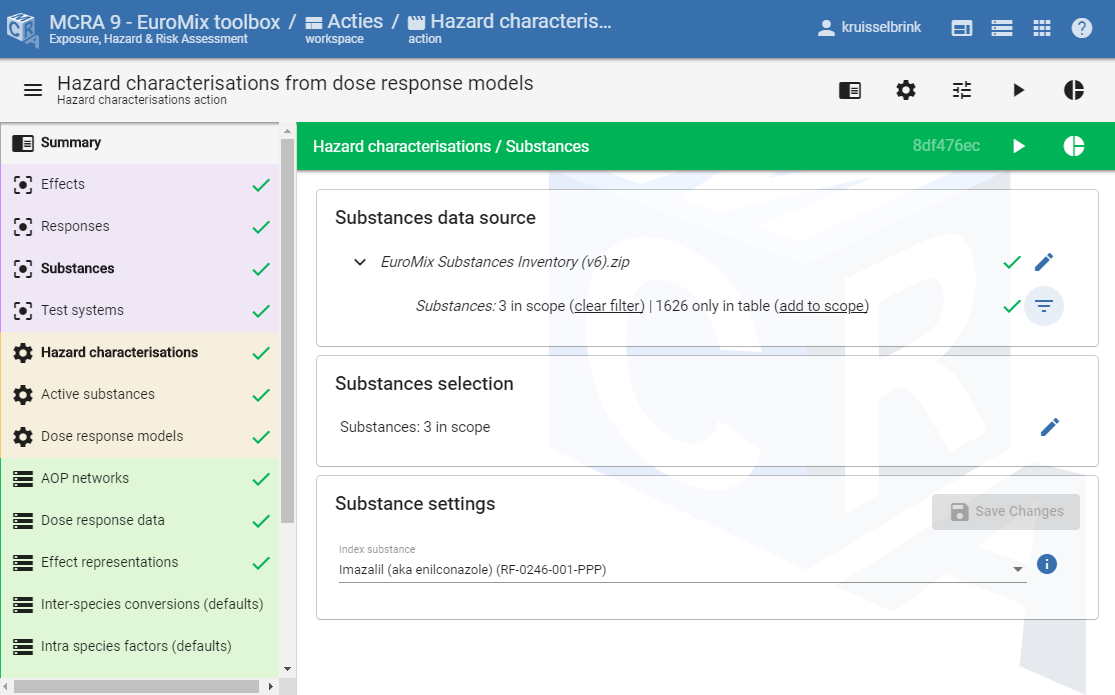Action configuration pages¶
In the action details pages, shown in Figure 7, actions can be configured, simulation jobs can be started, and the results can be evaluated. When opening an action, the user is directed to the main panel of the action, which is the panel associated with the action type of the action. This panel shows the following sections:
Scope: Links to the scope-panels in which the scopes of the action can be set (e.g., foods or substances).
Inputs: Links are shown for panels in which the calculation inputs or selection inputs can be set (e.g., concentration models that are inputs for computing dietary exposures).
Data source: If the action is a data action, then a form is shown in which the data source should be specified (e.g., selection of the concentration data source in a concentrations action).
Settings: A form is shown in which the calculation and/or selection settings of the action can be set/changed (e.g., specify the exposure type, chronic/acute, of an exposure assessment).
For each module of the modular design, a panel is available with the extact same structure. I.e., within the panel, the user can see which sub-modules are relevant as scope or as inputs, and can configure the data and settings relevant for the current module. In this way, the user can follow the structure of the modular design to select the data and settings required for running the action. Besides the panels associated with a (sub) module, there is also a summary panel in which the main settings and data of the action are summarized, an output settings panel in which more general output settings can be specified, an uncertainty settings panel in which the uncertainty analysis options can be specified, and a results panel that shows the tasks and the results of the action. An alternative form of navigating from action to sub-action is provided by the navigation menu in the left sidebar that can be expanded/collapsed by clicking on the menu button on the top left. In this menu, all necessary modules for the complete actions are shown in one list, allowing for a more linear way of navigation.
An action is valid and ready to run if all scopes and inputs are valid and all required data and settings are configured. For each module, it can be seen whether the module is correctly configured when it has the check symbol . In case it has a warning symbol some user action is required. When an action is ready to run, then a simulation job for the action can be started by pressing the run button on the top right. Clicking this button will send the simulation task of this action to the job-scheduler, and the progress of the task is shown in the results panel. When the task is completed, the output will be available in the form of a screen report and the report and downloads will be available to download the report as pdf, and the data in csv file format.

Figure 7 Screenshot of the main settings page of an action.¶
Scoping and data selection¶
Selection of the primary entities lies at the basis of each action of the toolbox that determine the scope of the actions. And for each action, data should be collected in data actions and models need to be configured in calculation modules to obtain models that relate to one or more of these primaray entities. The scope of the action is defined in the primary entity modules. Figure 8 shows a screenshot of the substances module panel, which is a primary entity module. At the top, the data source file can be selected containing the dataset of primary entity definitions. In the selection card, a selection can be made of the entities in the dataset that are relevant for the current action. In the settings form, additional (selection) settings are shown, e.g., selection of the index substance which may be relevant for the chosen action type. In this way, the scope of the action can be specified by selection of the primary entities. The panels for the data modules have a similar structure and selection is essentially the same. The only difference is that data actions always have a scope. I.e., data modules always relate to one or more primary entities.

Figure 8 Screenshot of the substances module panel as an example of a primary entity module panel.¶